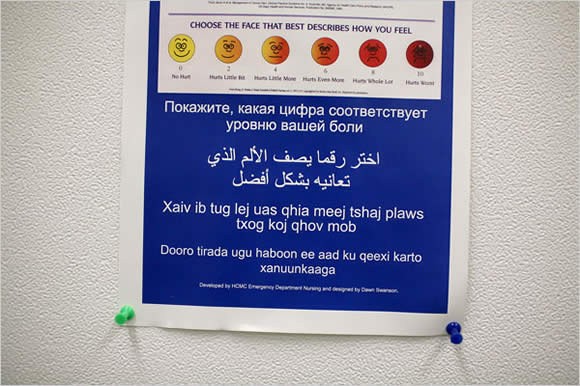Pain
Assessment
Pain in children presents some unique challenges. Barker and Wong (1987) present one common sense approach, summarized by the acronym QUEST(1):
Question the child
Use rating tools
Evaluate behavior (for example sleep, appetite)
Sensitize parents and staff
Take action!
The first step in pain assessment in children is to obtain a detailed history and physical exam.
Some components of pain assessment in children are(2):
- History of primary illness
- Detailed description of pain :
- Location
- Intensity
- Duration
- Exacerbating factors
- Relieving factors
- Associated symptoms
- Experience with pain medications
- Integrative (non pharmacologic strategies)
- Parent personal experience with pain medications
- Social factors
- Spiritual factors
Pain should be measured to:
- provide an indication of how effective the treatment has been
- obtain the child’s perspective of it.
During pain assessment it is important to keep in mind that measurement tools should not be used in isolation, other factors as physical status, developmental age, parent reports and environment need to be included.
For infants and young children behavioral scores can be used, for older children self-report scores including faces, numerical ratings, or visual analogue scales are used (Fig 1).
Figure 1: Faces Pain Scale:

From Pediatric Pain Sourcebook, www.painsourcebook.ca Version: 7 Aug 2007 CL von Baeyer. (6)
Diagnosing pain in non verbal children
Pain should be always considered in the differential diagnosis of altered behavior patterns in non verbal children. The longer the observation of behavior patterns in an individual child, the more reliable the assessment of pain. Thus the child’s family and primary nurses or other consistent caregivers are more likely to accurately identify pain related behavior than physicians(1).
The Paediatric Pain Profile was developed by Hunt A (7) as a tool to assess pain in non verbal children. Instructions and copies are available at the Pediatric Pain Profile website.
The following photograph was obtained from a New York Times slide show: A pain chart with instructions in multiple languages. Photo: Todd Heisler/The New York Times.
Immigrant Influx Tests a Minneapolis Hospital


